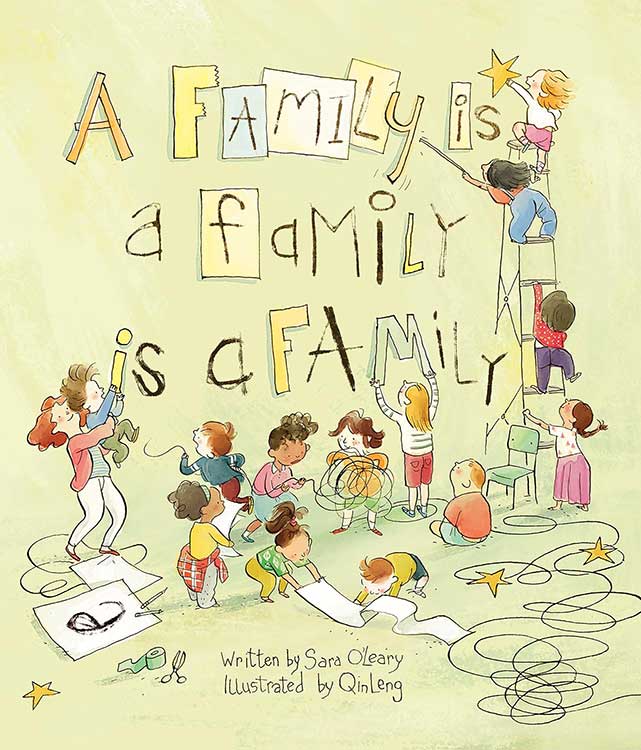When a teacher asks her class to think about what makes their families special, the answers are all different, but the same in one important way …
When a teacher asks the children in her class to think about what makes their families special, the answers are all different in many ways – but the same in the one way that matters most of all.
One child is worried that her family is just too different to explain, but listens as her classmates talk about what makes their families special. One is raised by a grandmother, and another has two dads. One has many stepsiblings, and another has a new baby in the family.
As her classmates describe who they live with and who loves them – family of every shape, size and every kind of relation – the child realizes that as long as her family is full of caring people, it is special.
A warm and whimsical look at many types of families, written by award-winning author Sara O’Leary, with quirky and sweet illustrations by Qin Leng.



![[T4R] A Family is a Family is a Family Reading Unit for Foundation Year [T4R] A Family is a Family is a Family Reading Unit for Foundation Year](https://i0.wp.com/stevendegc.com.au/wp-content/uploads/2025/03/T4R-A-Family-is-a-Family-UnitOverview.jpg?fit=1024%2C627&ssl=1)
![[T4R] A Family is a Family is a Family: L1 Background Knowledge [T4R] A Family is a Family is a Family: L1 Background Knowledge](https://i0.wp.com/stevendegc.com.au/wp-content/uploads/2025/03/T4R-A-Family-is-a-Family-L1-Cover.jpg?fit=1024%2C628&ssl=1)
![[T4R] A Family is a Family is a Family: L2 Making Predictions [T4R] A Family is a Family is a Family: L2 Making Predictions](https://i0.wp.com/stevendegc.com.au/wp-content/uploads/2025/03/T4R-A-Family-is-a-Family-L2-Cover.jpg?fit=1024%2C626&ssl=1)
![[T4R] A Family is a Family is a Family: L3 Making Personal Connections [T4R] A Family is a Family is a Family: L3 Making Personal Connections](https://i0.wp.com/stevendegc.com.au/wp-content/uploads/2025/03/T4R-A-Family-is-a-Family-L3-Cover.jpg?fit=1024%2C627&ssl=1)
![[T4R] A Family is a Family is a Family: L4 Connecting to a Similar Text [T4R] A Family is a Family is a Family: L4 Connecting to a Similar Text](https://i0.wp.com/stevendegc.com.au/wp-content/uploads/2025/03/T4R-A-Family-is-a-Family-L4-Cover.jpg?fit=1024%2C626&ssl=1)
![[T4R] A Family is a Family is a Family: L5 Summarising [T4R] A Family is a Family is a Family: L5 Summarising](https://i0.wp.com/stevendegc.com.au/wp-content/uploads/2025/03/T4R-A-Family-is-a-Family-L5-Cover.jpg?fit=1024%2C626&ssl=1)
![[T4R] A Family is a Family is a Family: L6 Reflecting and Evaluating [T4R] A Family is a Family is a Family: L6 Reflecting and Evaluating](https://i0.wp.com/stevendegc.com.au/wp-content/uploads/2025/03/T4R-A-Family-is-a-Family-L6-Cover.jpg?fit=1024%2C627&ssl=1)

